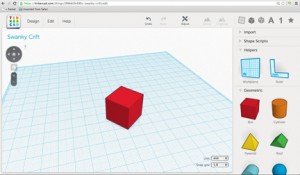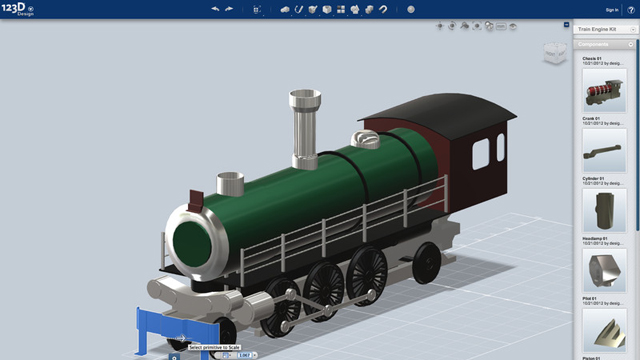[RELATED: How Thinking In 3D Can Help Math and Science Skills]
But once you’ve got a 3D printer built and connected to a computer, the next step is to begin brainstorming and designing an object -- and for that you'll need Computer Aided Design (CAD) software. CAD software has been around for decades. The program displays on your computer’s screen different perspectives of an object so you see it from every angle. CAD allows a skilled creator to “draw” something from scratch on the computer screen, designing any kind of object. Talented CAD designers can create just about anything using this software – a motor for a concept car, a new toy water blaster, and even replacement body parts.
Like 3D printers, CAD software used to be prohibitively expensive -- $10,000, $50,000 or even $100,000 for some of the best CAD applications on the market. But as 3D printers have dropped in price and become available to homes and schools, so has CAD software. As a matter of fact, in many instances, the price of CAD software has dropped to free. Even better, some CAD software has been specifically designed for non-technical users -- students, teachers, and parents. Here are a few examples:
 TinkerCad.com doesn’t even require a software installation, and runs directly from a web browser like Chrome or Firefox. TinkerCad has built-in tutorials that will help a user gain the basics of dragging shapes, adding letters, resizing objects, and much more. It’s colorful, very friendly to the youngest of students, and completely free to use. Kids can design an object and save it, returning later to fine-tune and tweak it as needed. After designing an object on TinkerCad, connect a 3D printer, and then print that object out.
TinkerCad.com doesn’t even require a software installation, and runs directly from a web browser like Chrome or Firefox. TinkerCad has built-in tutorials that will help a user gain the basics of dragging shapes, adding letters, resizing objects, and much more. It’s colorful, very friendly to the youngest of students, and completely free to use. Kids can design an object and save it, returning later to fine-tune and tweak it as needed. After designing an object on TinkerCad, connect a 3D printer, and then print that object out.
- With 3DTin.com, not only can students create their own designs, but they can load existing objects (called models) that have been created by other users and then modify them. 3DTin offers tutorials as well, so novices can quickly gain proficiency. As with TinkerCad, most models can easily be printed to a connected 3D printer.
- One of the big names in the CAD application industry is AutoDesk. While much of AutoDesk’s professional-level products are only available for purchase, the company has created a number of free CAD applications that can be used with 3D printers. AutoDesk offers 123D Design to users as a fast and easy tool for creating 3D objects that can be immediately sent to a connected 3D printer. But don’t ignore the company's other free apps. 123D Creature and 123D Sculpt are two iPad apps that let users create custom objects on an iPad that can be saved and printed. 123D Catch lets users take a number of photographs of an object (from various angles) and then converts it to a 3D model that can be tweaked and then printed. Finally, 123D Make can take a model and slice it into layers that can be cut out in wood, plastic, or cardboard and then assembled.
Printing real objects with a 3D printer is fun, but don’t discount the real-world skills that students will acquire and that will benefit them later in school (and in life). Math requirements can run the range from simple multiplication to trigonometry to calculus -- imagine students needing to understand how to calculate area between a curve and a straight surface for printing out an object to hold a liquid, for example.
3D printers are only going to get cheaper, easier to use, and more precise in what they produce. And whether or not students show an interest in art or engineering or any other discipline, they'll need some kind of understanding of CAD so they can put the technology to use in the careers of the future.



 TinkerCad.com
TinkerCad.com